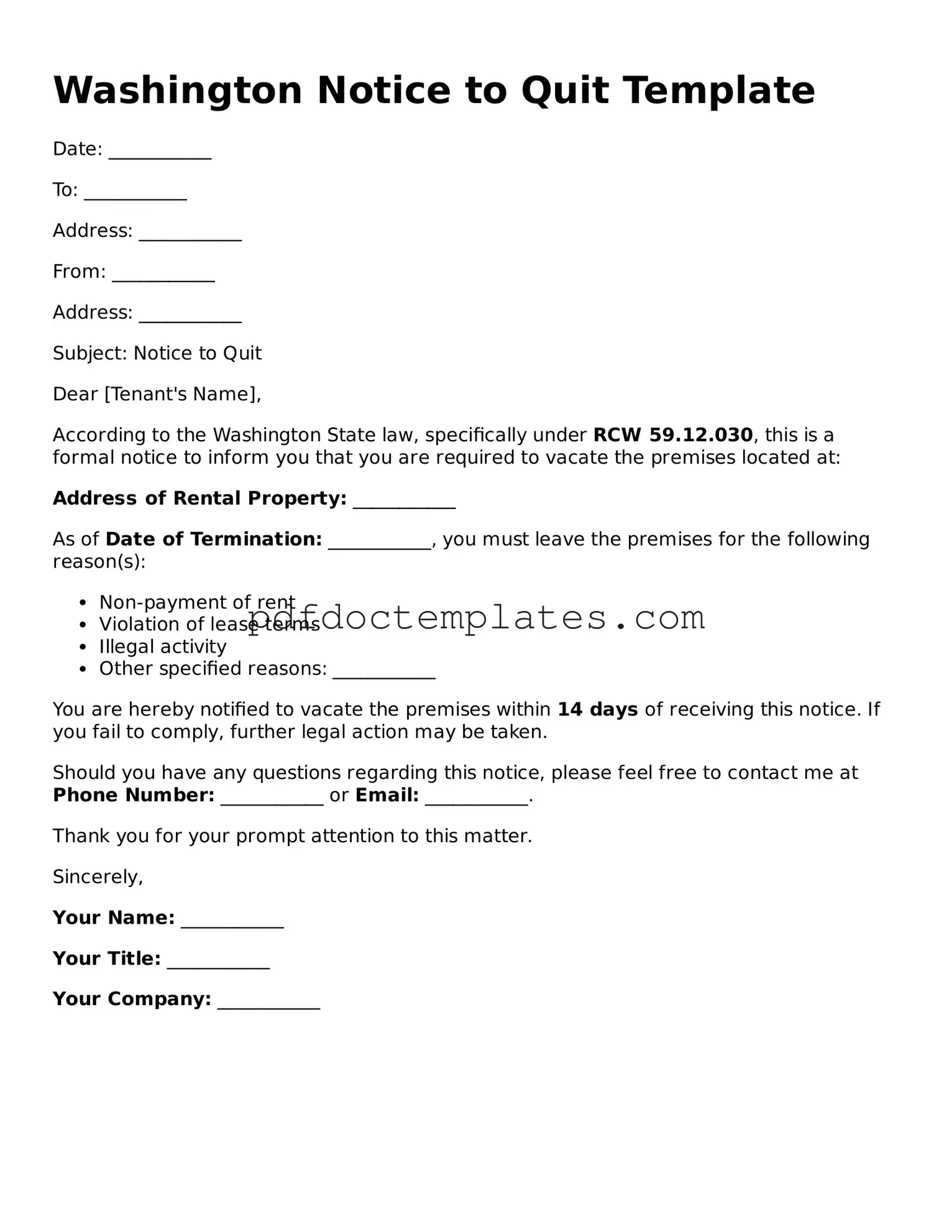Blank Notice to Quit Document for Washington
The Washington Notice to Quit form is a legal document used by landlords to formally notify tenants to vacate the rental property. This notice outlines the reasons for the eviction and provides a timeline for the tenant to respond or leave. Understanding this form is essential for both landlords and tenants to ensure compliance with state laws.
To get started with the Washington Notice to Quit form, fill it out by clicking the button below.
Access Your Document
